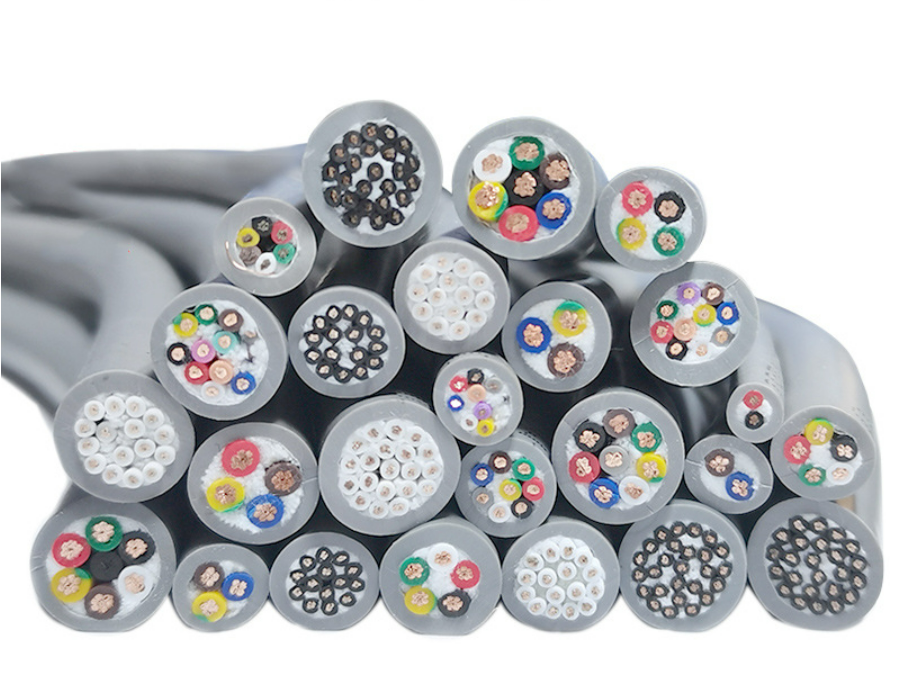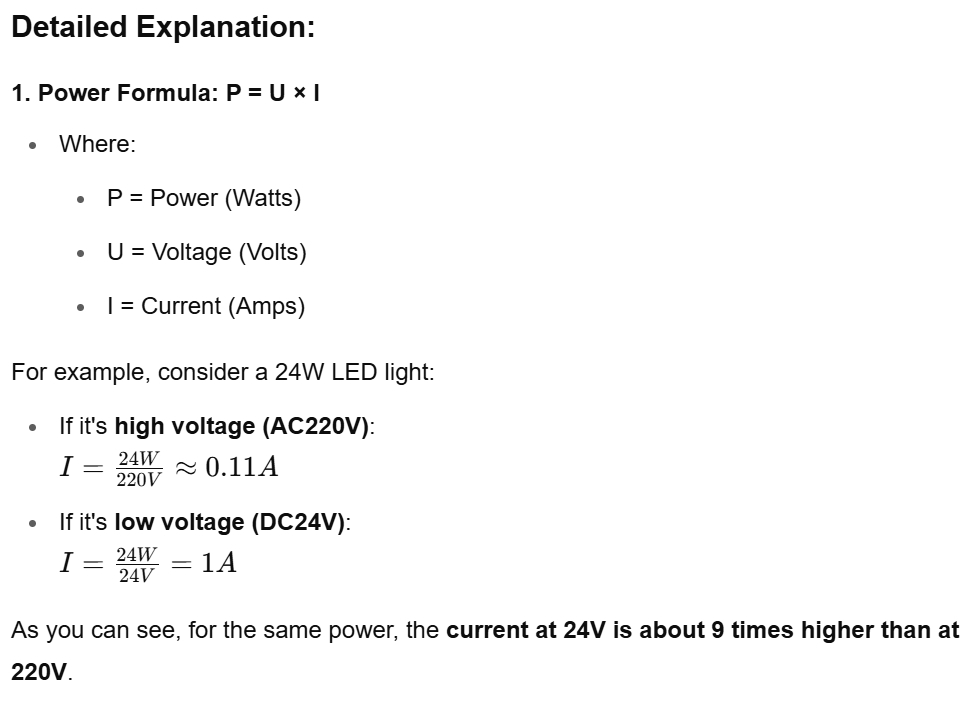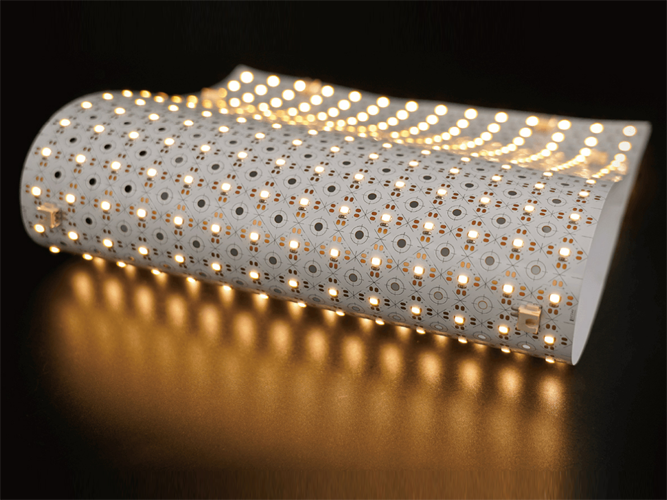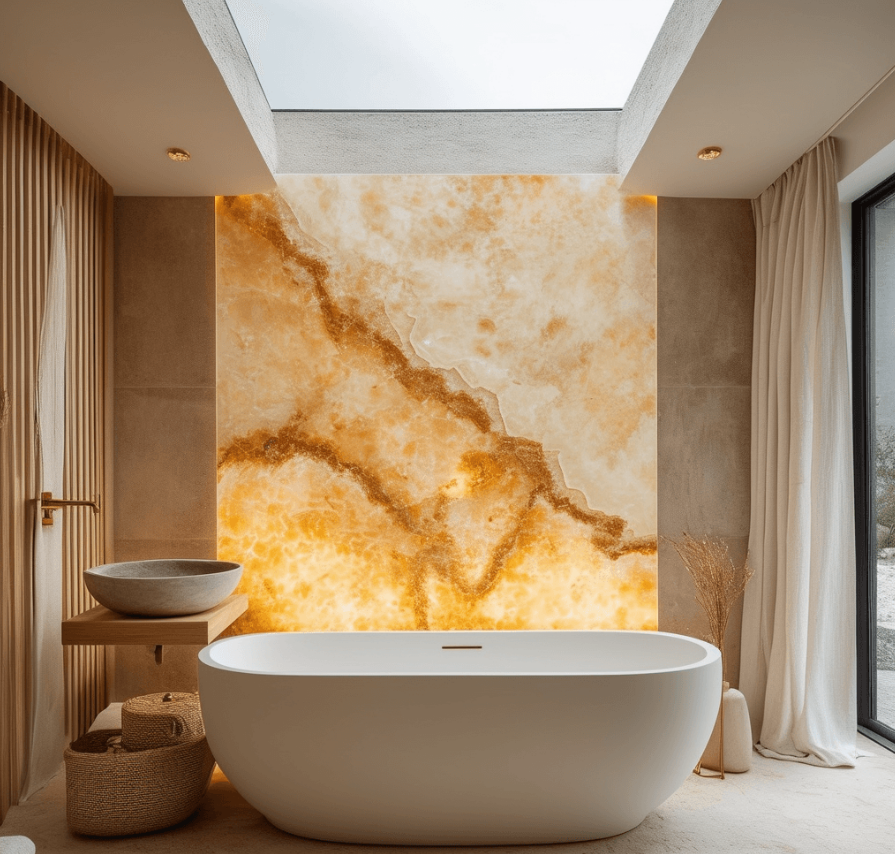
This is a basic electrical principle. The reason is simple: at the same power level, the lower the voltage, the higher the current. Higher current requires thicker wires to safely carry the load.

2. Higher Current Requires Thicker Wires
Because:
*Higher current causes more heat in the wire, which may lead to overheating or even fire hazards.
*Voltage drop becomes more significant. In low-voltage systems, if the wire is too thin, the voltage drop can make lights dim or fail to work properly.
Therefore, low-voltage LED systems require thicker wire to:
*Minimize voltage drop
*Reduce heat buildup
*Ensure electrical safety
*Deliver sufficient voltage to the LED fixtures for proper operation
Wires and their current carrying capacity:
Summary
Low-voltage LED fixtures draw more current, so they need thicker wires to handle the load, reduce voltage drop, and maintain safety. High-voltage systems have lower current, so the wire size requirement is smaller.
This is a fundamental rule in electrical design, and it’s especially important to consider in real-world wiring applications.







